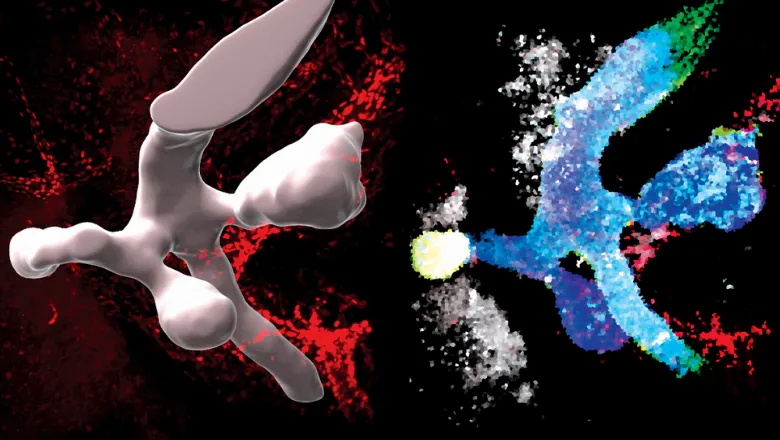Researchers from the Spagnoli Lab have identified a subpopulation of pancreatic progenitors that contribute cells to the rapidly growing liver.

During embryonic development, the pancreas, gallbladder and liver develop from a common pool of progenitors. New research from the Centre for Stem Cells & Regenerative Medicine's Dr Francesca Spagnoli and colleagues suggests that a subpopulation of pancreatic progenitors, which sits at the border between the pancreato-biliary bud and the liver, is maintained in a multipotent state by signals coming from the adjacent intestine.
For several years the Spagnoli Lab has been interested in explaining the mechanisms at the origin of the liver and pancreas, with a long-term goal of developing a treatment option for diabetes.
The project started in my lab few years ago. For several years we have been interested in how distinct cell types, such as liver and pancreas, arise from common progenitors and acquire specialized shape to form functional organs. How plastic are these cellular states? Can we harness cell plasticity between liver and pancreas towards novel regenerative therapies for diabetes?"– Dr Francesca Spagnoli
This work expands scientists' understanding of the cellular processes driving early organogenesis – the formation of organs. The findings indicate sustained plasticity underlying hepato-pancreato-biliary development.
Maintaining multipotent cells in a developing organ may have a similar purpose as maintaining a stem cell niche in an adult tissue, providing homeostatic regulation and improving resilience during organogenesis—for example, following developmental delay or loss of a lineage-restricted cell population. Failure to maintain such a multipotent progenitor domain might result in human genetic syndromes as well as human malformations, featuring multi-organ phenotypes in liver, pancreas and gall bladder.
Remarking on the impact of their study and their plans for future research, Dr Spagnoli said:
This is a truly interdisciplinary study, we combined computational modelling and mouse genetics approaches to show that multipotent progenitor cells that have the potential to populate the hepato-pancreato-biliary lineage tree persist in development. The next step is to study such plastic multipotent population in humans and exploit their potential for regenerative medicine. This might also help to illuminate the mechanisms underlying human genetic syndromes as well as human malformations, featuring multi-organ phenotypes in liver, pancreas and gall bladder."– Dr Francesca Spagnoli
Read the full paper "Quantitative lineage analysis identifies a hepato-pancreato-biliary progenitor niche" in Nature.






